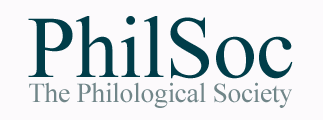The lecture, hosted by the University of York, will be given at Kings Manor (Huntingdon Room K/122) near the city centre (map).
Please note that all ordinary meetings commence at 4:15pm. Members are welcome to come for tea at 3:45 pm.
Database-oriented approaches to (areal-)typology generally represent languages as a fixed set of feature values (e.g. Dryer and Haspelmath 2013; Skirgård et al. 2023). These feature values often involve high-level generalizations, which may obscure considerable language-internal diversity (e.g. classifying languages on the basis of a basic constituent order ignores the fact that other constituent orders may be perfectly grammatical and even common.
Meanwhile, a different programme linguistics, Construction Grammar (e.g. Goldberg 2006; Croft 2021), regards languages as systems of form-meaning pairings. Here, linguistic properties do not so much apply to the language level, but rather to the level of the construction. Although this approach has given rise to numerous comparative studies, there is, to my knowledge, no standard, agreed-upon way to apply this approach to database-oriented linguistic comparison that involves large samples, and that requires constructions to be comparable.
This paper tries to bridge these two traditions by discussing an approach for performing construction-based areal-typological research, in which languages are regarded as inventories of form-meaning pairings. I also introduce several ways to calculate aggregate distance measures between languages, which allow for a comparison of these inventories at the language level and even between groups of languages.
I will do this by focusing in particular on tense-aspect-modality-evidentiality (TAME) constructions in the languages of the Upper Amazon in South America, an area extremely rich in diversity, connecting the Amazonian plains and the Andean highlands. The linguistic landscape of this area is the result of an intricate and poorly understood series of social processes like migrations, shifts, expansions, contact, and language loss (Arias et al. 2022; van Gijn et al. 2022). One of the consequences of this past is that many linguistic features are shared across family boundaries, creating a mismatch between genealogical and structural diversity. I will explore this question using the construction-based approach.
References
Arias, Leonardo, Nicholas Q. Emlen, Sietze J Norder, et al. 2022. ‘Interpreting Mismatches between Linguistic and Genetic Patterns among Speakers of Tanimuka (Eastern Tukanoan) and Yukuna (Arawakan).’ Interface Focus 13.
Croft, William. 2021. Ten Lectures on Construction Grammar and Typology. Distinguished Lectures in Cognitive Linguistics. Brill.
Dryer, Matthew S., and Martin Haspelmath, eds. 2013. The World Atlas of Language Structures Online. Max Planck Institute for Evolutionary Anthropology. http://wals.info.
Gijn, Rik van, Sietze J Norder, Leonardo Arias, et al. 2022. ‘The Social Lives of Isolates (and Small Languag Families): The Case of the Northwest Amazon.’ Interface Focus 13. https://doi.org/10.1098/rsfs.2022.0054.
Goldberg, Adele E. 2006. Constructions at Work: The Nature of Generalization in Language. Oxford University Press. https://doi.org/10.1093/acprof:oso/9780199268511.001.0001.
Skirgård, Hedvig, Hannah J. Haynie, Damián E. Blasi, et al. 2023. ‘Grambank Reveals the Importance of Genealogical Constraints on Linguistic Diversity and Highlights the Impact of Language Loss’. Science Advances 9 (16): eadg6175. https://doi.org/10.1126/sciadv.adg6175.

